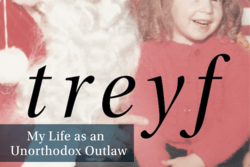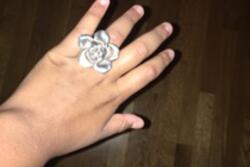Jewelry and Jewish Feminism
As a little girl, getting ready for Shabbat morning services always felt like an ordeal. I never enjoyed waking up extra early on Saturdays to put on uncomfortable clothes and sit for endless hours listening to a service I didn’t understand. If it were not for a special privilege at the courtesy of my mother, I don’t think I ever would have learned to love Shabbat mornings. Before we left, I could pick out any necklace from her box and wear it for the day. Before I had any jewelry of my own or had even pierced my ears, this was a momentous opportunity for self-expression. I didn’t realize it then, but my weekly deliberations over gold Stars of David and silver hamsas would foreshadow an important element of my identity as a Jewish feminist.
Like everything we wear, our jewelry displays our tastes and preferences. On a deeper level, though, it also projects our values to the world. Many young Jewish women I know, including myself, make it a point to cover themselves in traditional symbols, their decorated bodies a confident reminder of their right to embrace their culture. This collective interest marks an important chapter in our Jewish feminist experience, one where our aesthetic desires and religious beliefs combine to create a set of common experiences among us.
One of my first interactions with owning Jewish jewelry (outside of borrowing my mother’s necklaces) was when I became a Bat Mitzvah. I received a blue hamsa necklace, a gift my friends reveled in and I displayed with pride. The necklace itself is a common present for many young Jewish women, and I celebrated receiving that blue hamsa as if it signified my coming of age on a deeper, more symbolic level. The present was more than a material trinket; it was an opportunity to show the world the community that I belonged to and to remind myself of the people constantly supporting me.
When I traveled to Israel a few years later, I further discovered the significance of Jewish jewelry in building my feminist circle. Wandering down Ben Yehuda Street in Jerusalem, an urban center crowded with shops of all sorts, I noticed the freedom with which my friends expressed their tastes and desires when unburdened by the stereotypes of materialism and vapidity that seem to follow Jewish women around. Harmful caricatures of women being overly vain have pervaded media for years, and it's clear to see how Jewish women can also be victim to that stereotype. However, the jewelry we chose to wear was not worn to display wealth, but to display hope, faith, family, and other noble ideas. We all had a signature symbol, anything from a chai to a tree of life to a hamsa, that we were avid to discuss and display. The deep conversations we had helped me to become more confident in expressing myself and more comfortable with empowering others to express themselves as well. Jewelry can be swapped and shared between friends, encouraging the giver to communicate their history with the piece and inviting the wearer to share in that history.
In Tzfat, the ancient capital of Jewish mysticism, I explored the relationship between my culture and its iconography through window shopping. Jewelry is an art form that engages with the wearer, moving as the wearer moves, living with the wearer as they live. I realized the deep connection many of us have with our unique symbols is due to the experiences we share with our jewelry. If a humble necklace or set of earrings has the power to connect us with our community, then our favorite pieces are more than just metallic ornaments. After hours of meandering around the shopping district, my friends and I emerged laden with gifts for our family and peers, as well as matching rings, each engraved with the Shema. I still hesitate to take the ring off despite the many months that have passed since its purchase. I know that the rings bind us, constant reminders of not only our faith in God, but our faith in each other.
All of these items, from Bat Mitzvah presents to family heirlooms, are more than what they are made of. Every time I put on a necklace bearing a Star of David or my Hebrew name, I’m grateful for the fact that I have the right to display my identity and values for all the world to see. Like many other Jewish women I know, I have found catharsis in Judaica shops, shared interests and experiences on the streets of Israel, solidarity on the fingers and wrists of strangers.
One of the most important pieces of jewelry to me bears no Jewish images or letters. My grandmother, a woman I have never met but am named for, owned a thin gold bangle. My father remembers her wearing the bracelet to Temple for many years, and I choose to carry on that tradition by wearing it on special religious occasions. The bracelet has equal, if not more, value to me as a piece of Jewish jewelry. Though it may lack physical characteristics that align itself with religion, the bracelet was worn in the act of being Jewish, worn as prayers were chanted and communities came together, as individuals were blessed and supported, as life was lived. In my eyes, the bracelet is a piece of Jewish jewelry, one defined not by its appearance, but by the history and love imbued in the object.
Nowadays, when I have to get ready for school, Shabbat, or any occasion in between, I see putting on my jewelry as a sacred ritual in and of itself. Our pasts and futures, privileges and hopes are held and maintained in the designs that have persisted throughout history, designs we proudly don today in an age where we have the freedom to embrace our identity. The confidence we can feel through the experiences of receiving, giving, learning about, and wearing Jewish jewelry is immeasurable, just like the confidence we can gather through involvement in our Jewish communities.
This piece was written as part of JWA’s Rising Voices Fellowship.







This is so beautiful.
This is so beautiful! You really made me think about the jewelry I wear and why I wear it. Thank you.
What a tribute to parenting. The Apple did not fall far from the tree. So proud of you Lila!